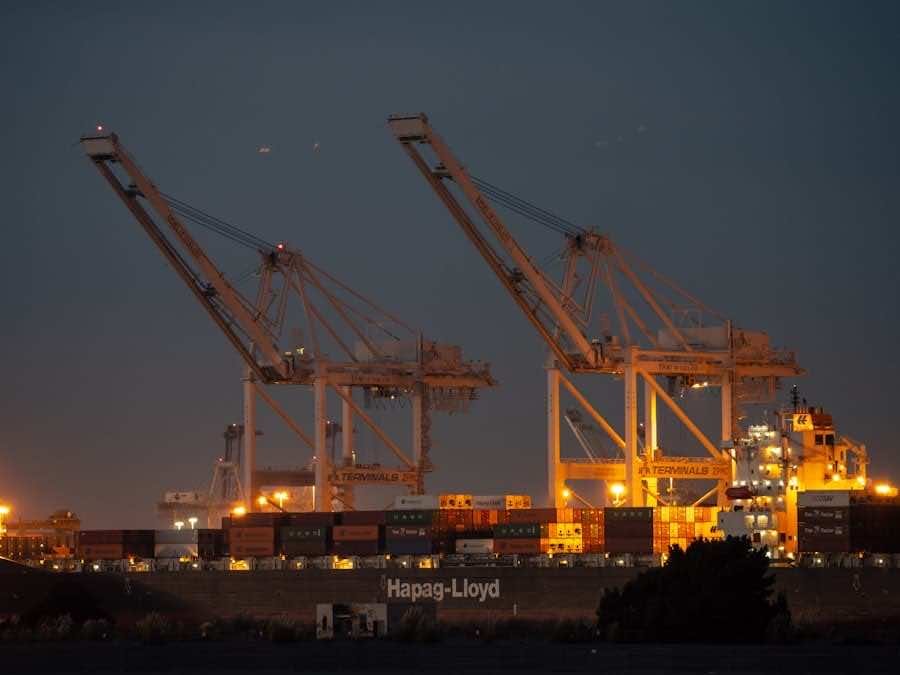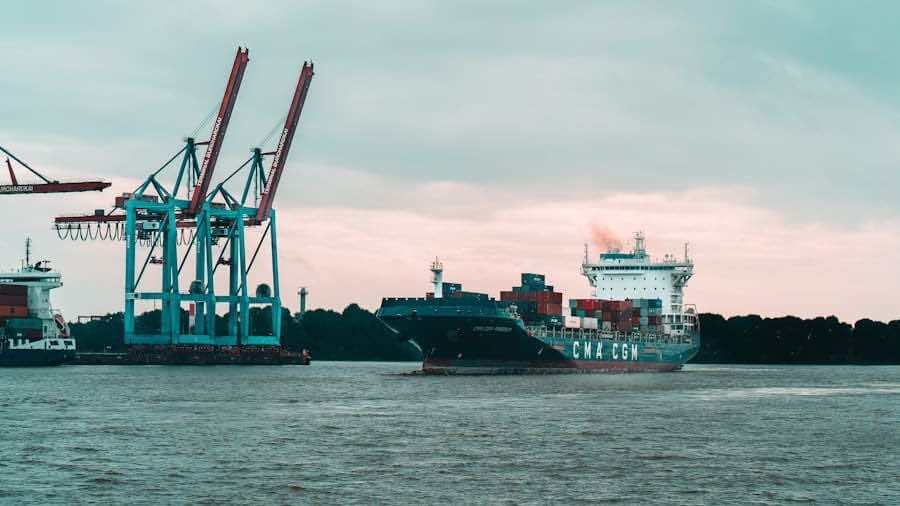Reshoring, the process of bringing manufacturing operations back to a company’s home country from overseas, has gained significant traction in recent years. This trend is often a response to the complexities and challenges associated with global supply chains, which have been exacerbated by geopolitical tensions, trade tariffs, and the COVID-19 pandemic. The concept of reshoring is not merely about relocating production; it encompasses a strategic reevaluation of where and how goods are manufactured.
Companies are increasingly recognising that domestic production can lead to greater control over quality, faster turnaround times, and improved customer service. The motivations behind reshoring are multifaceted. For many manufacturers, the initial allure of offshoring was driven by the promise of lower labour costs and increased profit margins.
However, as global dynamics shift, these advantages have been called into question. Rising wages in traditionally low-cost countries, coupled with the hidden costs of long-distance logistics and supply chain disruptions, have prompted businesses to reconsider their manufacturing strategies. Reshoring is thus seen as a viable solution to enhance operational efficiency while also aligning with consumer preferences for locally produced goods.
Summary
- Reshoring in manufacturing refers to the process of bringing back production and manufacturing operations to the home country from overseas locations.
- The benefits of reshoring for manufacturers include reduced lead times, improved quality control, lower transportation costs, and increased flexibility in responding to market changes.
- Factors driving the reshoring trend include rising labour costs in overseas locations, concerns about intellectual property protection, and the desire to support local economies and supply chains.
- Challenges and considerations in reshoring include initial investment costs, potential disruption to existing supply chains, and the need to develop a skilled workforce.
- Successful examples of reshoring in manufacturing include companies like Apple, GE, and Ford, who have brought back production to the United States, creating jobs and boosting the local economy.
The Benefits of Reshoring for Manufacturers
Improved Agility and Responsiveness
For instance, a manufacturer that reshores its operations can quickly adapt its production schedules based on real-time sales data, reducing the risk of overproduction or stockouts.
Enhanced Product Quality and Innovation
Additionally, reshoring can lead to improved product quality and innovation. When manufacturing is conducted domestically, companies often have better oversight of their production processes. This oversight can result in higher quality standards and reduced defect rates. Furthermore, being closer to research and development teams can foster collaboration and innovation, enabling manufacturers to bring new products to market more swiftly.
Real-World Examples of Reshoring Success
For example, automotive companies that have reshored their operations have reported enhanced collaboration between design and manufacturing teams, leading to more innovative vehicle features and designs.
Factors Driving the Reshoring Trend

Several factors are propelling the reshoring trend in manufacturing. One primary driver is the increasing cost of labour in countries that were once considered low-cost manufacturing hubs. As wages rise in places like China and Vietnam, the cost advantage that initially attracted manufacturers has diminished.
This shift has prompted companies to reassess their cost structures and consider the total cost of ownership rather than just labour costs. Another significant factor is the growing emphasis on sustainability and ethical production practices. Consumers are becoming more conscious of where their products come from and the environmental impact of their production.
Reshoring allows manufacturers to implement more sustainable practices by reducing transportation emissions and ensuring compliance with local environmental regulations. Companies that prioritise sustainability can enhance their brand image and appeal to a growing segment of eco-conscious consumers.
Challenges and Considerations in Reshoring
Despite its numerous advantages, reshoring is not without its challenges. One of the most pressing issues is the availability of skilled labour in the home country. Many regions have experienced a decline in manufacturing jobs over the years, leading to a skills gap that can hinder a company’s ability to ramp up production quickly.
Manufacturers may need to invest in training programmes or collaborate with educational institutions to develop a workforce equipped with the necessary skills for modern manufacturing processes. Moreover, the initial costs associated with reshoring can be substantial. Companies may face significant capital expenditures related to setting up new facilities or upgrading existing ones to meet modern standards.
Additionally, there may be regulatory hurdles to navigate, including compliance with local labour laws and environmental regulations. These factors necessitate careful planning and a thorough cost-benefit analysis before making the decision to reshore.
Successful Examples of Reshoring in Manufacturing
Numerous companies have successfully navigated the reshoring process, demonstrating its viability as a strategic move in manufacturing. One notable example is General Electric (GE), which made headlines when it announced the reopening of its appliance manufacturing facility in Louisville, Kentucky, after years of offshoring production to China. This decision was driven by a desire to enhance product quality and reduce lead times for customers.
The move not only created jobs but also revitalised local economies by fostering a manufacturing ecosystem. Another compelling case is that of Ford Motor Company, which has invested heavily in reshoring its production capabilities for electric vehicles (EVs). By bringing EV manufacturing back to the United States, Ford aims to leverage local talent and resources while also responding to increasing consumer demand for sustainable transportation options.
This strategic shift not only positions Ford as a leader in the EV market but also contributes to job creation in regions historically reliant on automotive manufacturing.
The Impact of Reshoring on the Economy

The economic implications of reshoring extend beyond individual companies; they can significantly influence local and national economies. When manufacturers reshore their operations, they often create jobs not only within their facilities but also throughout the supply chain. This job creation can lead to increased consumer spending, which stimulates local economies and contributes to overall economic growth.
Furthermore, reshoring can enhance national competitiveness by fostering innovation and technological advancement. As companies invest in modernising their production processes, they often adopt advanced manufacturing technologies such as automation and artificial intelligence. These investments can lead to increased productivity and efficiency, positioning nations as leaders in high-tech manufacturing sectors.
Countries that successfully embrace reshoring may find themselves better equipped to compete in an increasingly globalised economy.
How Technology is Influencing Reshoring
Technology plays a pivotal role in reshaping the landscape of manufacturing and influencing the decision to reshore operations. The advent of Industry 4.0 technologies—such as the Internet of Things (IoT), robotics, and advanced data analytics—has transformed traditional manufacturing processes. These technologies enable manufacturers to optimise production efficiency, reduce waste, and enhance product quality.
For instance, IoT devices can provide real-time data on machine performance and production metrics, allowing manufacturers to identify bottlenecks and implement corrective actions swiftly. Robotics can automate repetitive tasks, freeing up human workers for more complex roles that require creativity and problem-solving skills. As these technologies become more accessible and affordable, manufacturers are increasingly inclined to invest in domestic production capabilities rather than relying on overseas facilities.
The Future of Reshoring in Manufacturing
Looking ahead, the future of reshoring in manufacturing appears promising but will require ongoing adaptation to evolving market conditions and technological advancements. As global supply chains continue to face disruptions from geopolitical tensions or pandemics, manufacturers may increasingly prioritise resilience over cost savings alone. This shift could lead to a more balanced approach that considers both domestic production capabilities and global sourcing strategies.
Moreover, as sustainability becomes an even more pressing concern for consumers and regulators alike, manufacturers will need to integrate environmentally friendly practices into their reshoring strategies. This could involve investing in renewable energy sources for production facilities or adopting circular economy principles that minimise waste throughout the manufacturing process. In conclusion, reshoring represents a significant shift in manufacturing strategy that offers numerous benefits while also presenting challenges that must be navigated carefully.
As technology continues to evolve and consumer preferences shift towards sustainability and local production, manufacturers will need to remain agile and responsive to ensure their long-term success in an increasingly competitive landscape.
Reshoring in manufacturing is a strategic decision that many businesses are considering in order to bring production back to their home country. This move can have various benefits, such as reducing supply chain risks and improving quality control. For more insights on reshoring and its impact on businesses, check out the article Achieving Business Growth in 2021: A Helpful Guide for All Entrepreneurs. This article provides valuable tips and strategies for entrepreneurs looking to expand their businesses in the current economic climate.
FAQs
What is reshoring in manufacturing?
Reshoring in manufacturing refers to the process of bringing back the production of goods and services to the company’s home country, rather than outsourcing it to a foreign country.
Why do companies consider reshoring in manufacturing?
Companies consider reshoring in manufacturing for various reasons, including rising labour costs in foreign countries, quality control issues, intellectual property concerns, and the desire to support the local economy.
What are the benefits of reshoring in manufacturing?
The benefits of reshoring in manufacturing include reduced transportation costs, improved quality control, shorter lead times, better protection of intellectual property, and the creation of local jobs.
What are the challenges of reshoring in manufacturing?
Challenges of reshoring in manufacturing may include higher production costs, the need to invest in new infrastructure and technology, potential skills shortages, and the need to re-establish supplier networks.
What industries are most likely to reshore manufacturing?
Industries that are most likely to reshore manufacturing include electronics, textiles, automotive, and consumer goods, where labour costs, quality control, and intellectual property protection are significant concerns.
